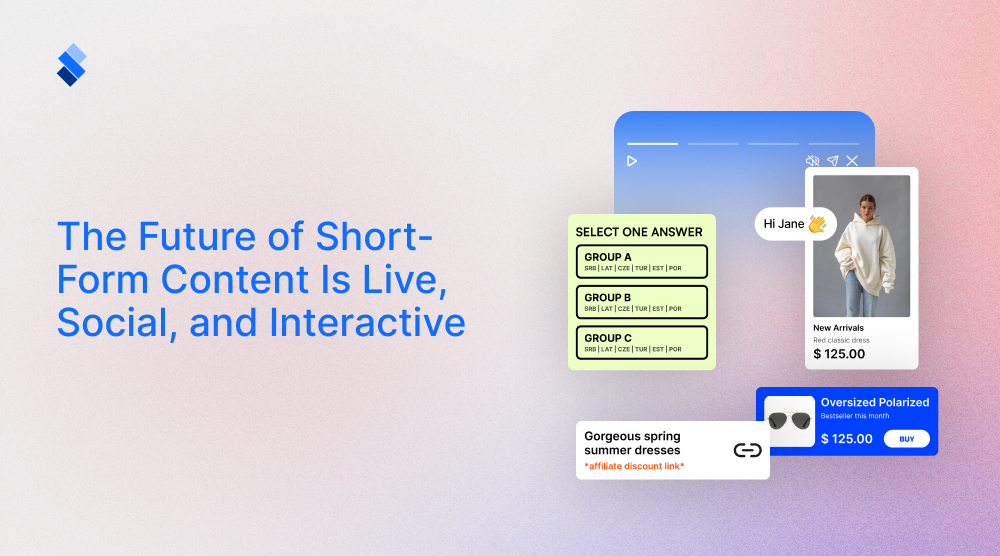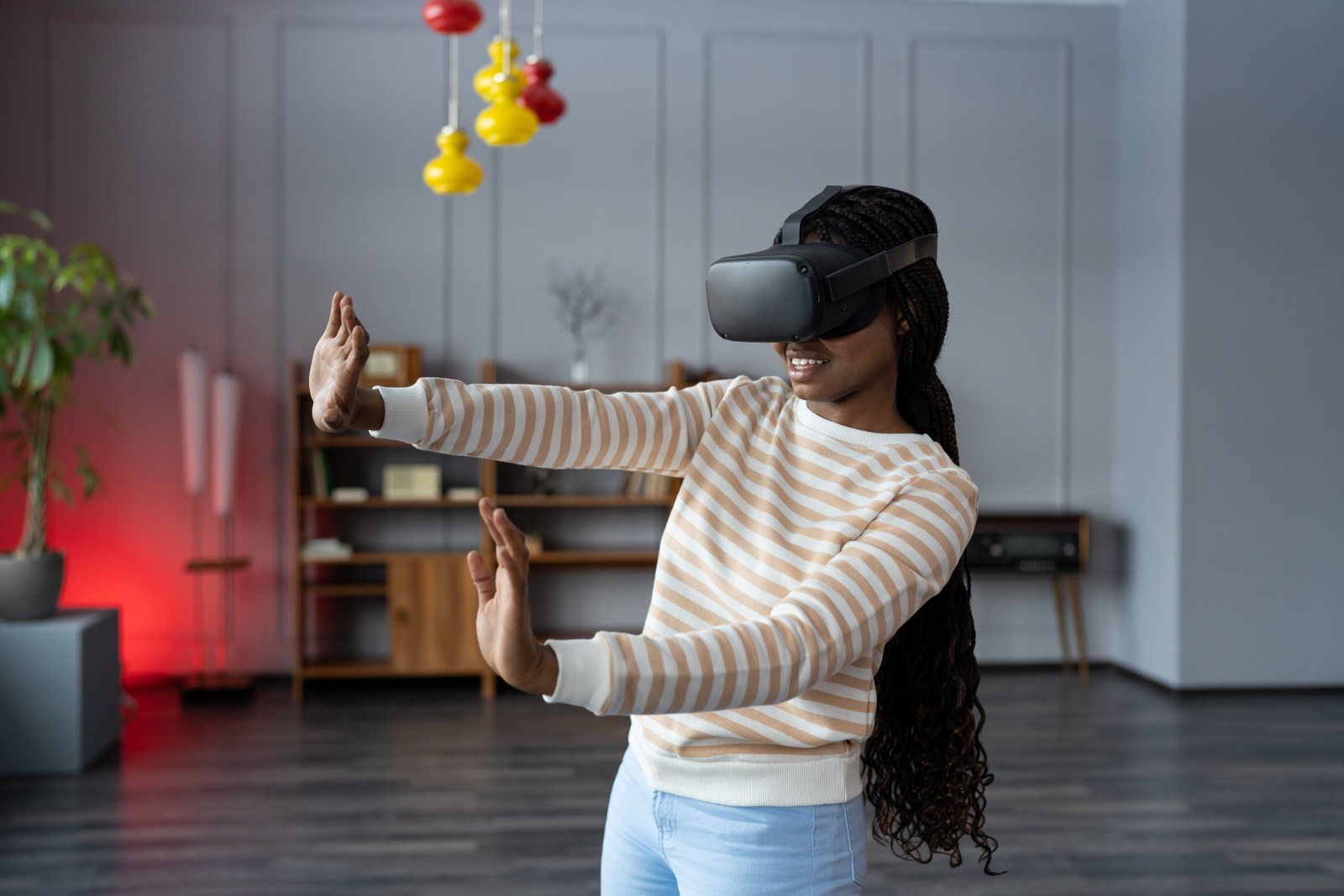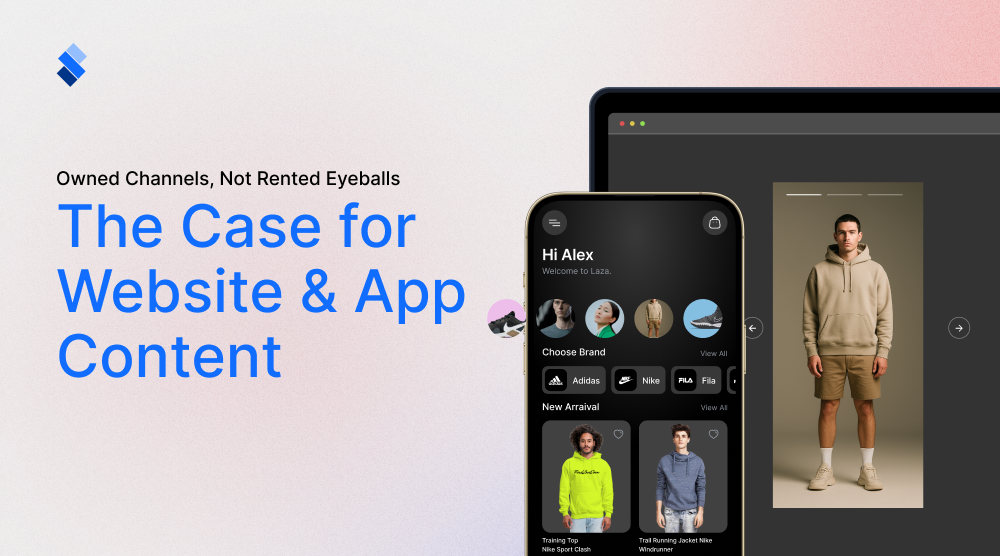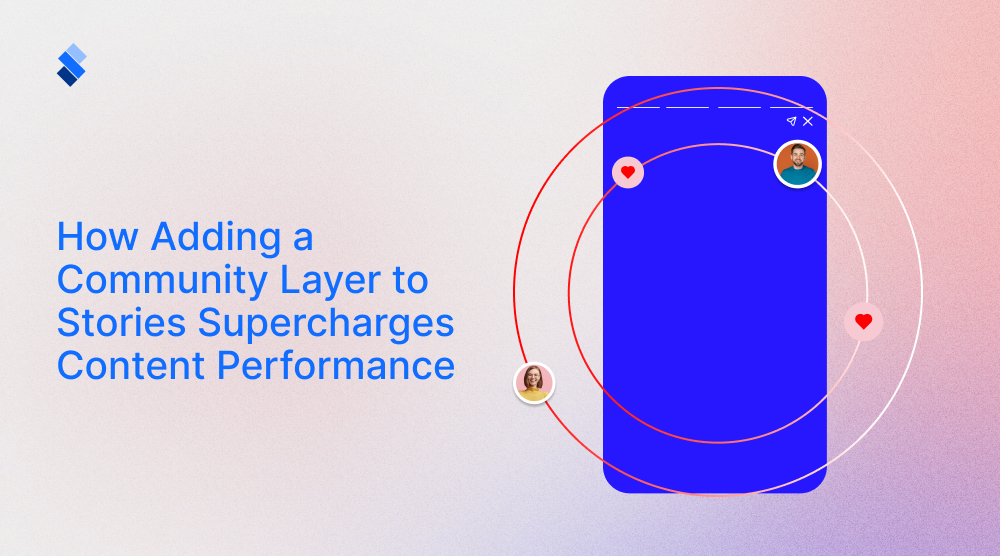The Future of Short-Form Content Is Live, Social, and Interactive
Explore why the future of marketing lies in live, social, & interactive short-form content. Learn how these key trends drive authenticity, engagement, and conversion in the AI age.

It is never easy to try and predict the future of marketing. On the one hand, you have some clear signs of what is to come and what the most likely trends, tools, and strategies will be. On the other hand, the seemingly constant innovations in AI and IT blur the image of future marketing. Nevertheless, we feel that our years of experience and research have given us some insight into how the future will unfold, at least when it comes to short-form content. So, seeing that our clients are reorienting and adjusting their marketing strategies as we are writing this article, we will give some predictions of short-form content trends.
The unyielding importance of short-form content
Let’s start by evaluating the importance of short-form content in modern marketing. Suffice to say, short-form content is no longer just a trend. It's a fundamental shift in marketing strategy driven by profound changes in consumer behavior and technology. We can summarize its importance in a few key points:
It aligns with how people consume information today
The modern consumer is overwhelmed with information and has a shrinking attention span. This has been true in 2021, and is only going to become more true in future years. Short-form content (videos under 60 seconds, quick-hitting posts, Stories) is designed for this reality. It delivers value or entertainment in a quick, easily digestible format that fits seamlessly into scrolling sessions on a phone. It respects the audience's time while making a memorable impact.
Search engine optimization
Modern SEO has evolved from the keyword-centric approach to a far more sophisticated one. If we go back to 2024, we’ll see that Generative Engine Optimization motivated Google to prioritize comprehensive user experience and topical authority over individual page metrics. They heavily favor EEAT (Experience, Expertise, Authoritativeness, Trustworthiness) and genuine user satisfaction signals. In this environment, short-form content is exceptionally effective because it aligns perfectly with the "quick answer" nature of AI-powered search results and user intent for immediate, digestible information. This allows creators to publish more frequently, target a wider array of specific long-tail queries, and generate fresh signals that boost overall site authority.
Authentic connection
Highly polished content usually, feels long-form content can feel corporate and distant. Short-form content, especially live videos and casual posts, feels more authentic and human. This authenticity is crucial for building trust and fostering a genuine connection with your audience. Especially when it comes to younger ones, like Gen Z. It allows your brand's personality to shine through, turning followers into a community.
Mobile optimization
Virtually all short-form content is created and consumed on mobile devices. By focusing on short-form, you are inherently optimizing for the primary way people now access the internet. This vertical, full-screen format is more immersive and impactful than content adapted from a desktop experience.
With all this in mind, it should be evident why short-form content is not only effective now but also why it is here to stay. It meets the audience where they are: on their phones, short on time, and craving authentic, valuable connections. A modern marketing strategy without it is missing its most dynamic and far-reaching tool. Now, let’s explore why they need to be live, social, and interactive.
Live
A live short-form video is arguably one of the easiest types of content to make. By simply turning on a camera and letting the viewers tune in, the video host achieves a couple of things. Especially if they know how to communicate with their audience.
Authenticity
As a stark difference, a pre-recorded, edited video can feel polished and corporate. Audiences, especially younger demographics, are developing a "polish detector" and crave genuine connection. Meanwhile, live video is inherently unscripted and imperfect. The stumbles, the real-time reactions, and the unfiltered nature build a level of trust and relatability that pre-produced content simply cannot match. In an age of AI-generated content and deepfakes, "real" will become a premium quality.

FOMO (Fear Of Missing Out)
Live content is an event. It happens in the moment, and if you're not there, you miss the unique interaction. This creates a powerful urgency that drives immediate viewership and higher engagement rates. A notification for a live session is far more compelling than a notification for another pre-recorded video because the opportunity to participate is fleeting.
The algorithms’ focus on engagement
Social media algorithms prioritize content that keeps users on the platform. Live sessions typically generate significantly higher watch time, comments, and shares than standard videos because they are dynamic events. Platforms like TikTok, Instagram, and YouTube will increasingly favor and promote live content because it drives their key metrics. Going live is a powerful signal to the algorithm that your content is highly engaging.
Streamlined commerce and conversion
If you think about it, live video is the digital equivalent of a home shopping network just supercharged. Live shopping is already massive in markets like China and is growing rapidly in the West. The combination of short-form videos' appeal with live demonstrations, limited-time offers, and real-time viewer questions is an incredibly powerful sales tool. It shortens the path from discovery to purchase dramatically. When combined with FOMO it easily illustrates how popular and engaging these shoppable live videos can be.

The saturation of pre-recorded content
As of writing this article, the market for highly produced, short-form videos is becoming crowded. Even with top-notch content, it's becoming harder and harder to stand out. Live content offers a new frontier. A cost-effective way to break through the noise by offering something unique and unreplicable: a genuine moment in time.
Social
The live aspect of short-form content hints at a crucial element. Namely, people don’t only want to interact with content, but with other people. As such, it is fair to expect that the modern short-form content is only going to become more social-focused as time goes on.
The shift from audience to community
Traditional marketing talks about building an audience as a group of people who listen to you. Meanwhile, the future is about building a community as a group of people who talk with each other and with you. Short-form platforms are baking "social" features directly into the content experience, forcing this shift. Live chats, polls, quizzes, reposts... These aren't just features. They are invitations. They turn your content into a template for a collaborative conversation. A brand can post a dance challenge, and the "content" is no longer just the brand's video. Instead, it's the entire feed of user-generated responses. This is content co-creation on a massive scale.
The rise of collaborative creation
The future of content isn't solo; it's collaborative. We see this with the rise of influencer "collab" videos and brands going live with their customers. This social weaving of perspectives makes content more dynamic and interesting than any single creator could produce alone. It cross-pollinates audiences and adds layers of authenticity and credibility.

Filling the Void for Digital Connection
As our lives become more digital, there is a growing hunger for genuine connection. Social short-form content, where you can actively interact with a creator, a brand, and a whole community of fellow fans, helps fill this void. It turns a platform from a content library into a digital town square. In essence, short-form content will be "social" because that is the only way to survive and thrive on these platforms. Passive content will get lost in the noise. The content that wins will be the content that starts a conversation, invites participation, and makes the viewer feel like they are not just a consumer, but a vital part of the story. It’s the difference between giving a speech and hosting a party. The latter is far more memorable and impactful.
Interactive
The last aspect that will shape the future of short-form content is interactivity. Even with social and live elements, we could’ve witnessed interactivity as an integral part. But, there are aspects of short form content that it enables on its own.
Interactivity grabs attention
With endless content available, passive viewing is no longer enough to capture and hold attention. Meanwhile, interactivity demands engagement. When a user has to do something (vote in a poll, choose an ending, tap to reveal a discount), they are no longer just scrolling; they are investing a piece of themselves in the content. This active participation dramatically increases dwell time and makes the experience memorable.

The rise of the "Choose your own adventure" narrative
Interactive features transform viewers from spectators into co-creators of the experience. This includes:
- Polls and sliders - Letting the audience vote on what happens next in a video series.
- Branching narratives - "Tap to choose path A or path B" within a single video.
- Quizzes and games - Turning a product demonstration into an interactive quiz ("Which product is right for you?").
This gives users a sense of agency and control, making them far more invested in the outcome.
Data collection as a seamless user experience
Interactivity is a marketer's goldmine for first-party data. Instead of asking users to fill out a survey, you can gather their preferences through the content itself.
- An interactive poll in a Story asks: "Which design do you prefer?"
- A "Swipe Up" to see a result personalized to their choice.
This turns data collection from a chore into an engaging, value-added part of the content experience.
The direct path to conversion (Shoppable Content)
The ultimate form of interactivity is commerce. Short-form platforms are rapidly integrating features that allow users to act instantly without leaving the app.
- TikTok Shop - Clicking a product directly in a video.
- Instagram Story Stickers - "Tap to Shop" or "Reserve" a product.
This removes friction from the customer journey, turning a moment of inspiration into an immediate purchase. The content is both an ad and a point of sale, which would be a dream for a marketer in early 2000s.
Augmented reality (AR)
While on the subject of interactivity, we should mention that the next frontier of interactivity is AR filters and effects. Users don't just watch content; they step into it. They can try on makeup, place furniture in their room, or play an AR game branded by a company. This blends the digital and physical worlds, creating incredibly immersive and shareable experiences. Now imagine what will happen when AI integrates with AR and VR development and we soon get immersive live experiences, with social aspects, within our own living room. Once you start thinking about technological advances you’ll soon see how exciting the future is.

Final thoughts
The future of short-form content is not merely about being brief. It is about being dynamically integrated into the very fabric of digital interaction. As we have explored, its trajectory is clear: content will become increasingly live, social, and interactive. These elements are the essential response to a landscape defined by algorithmic demands, audience craving for authenticity, and the need for genuine connection in an AI-saturated world.
Ultimately, the brands that will thrive are those that stop thinking of short-form as just a broadcasting tool and start treating it as a vehicle for co-creation. The goal is no longer to simply capture attention, but to foster a participatory community. By embracing the raw authenticity of live video, the collaborative nature of social features, and the engaging power of interactive experiences, marketers can transform their strategy from a monologue into a meaningful, memorable dialogue. The future of marketing is not just to be seen but to be experienced with your audience.






